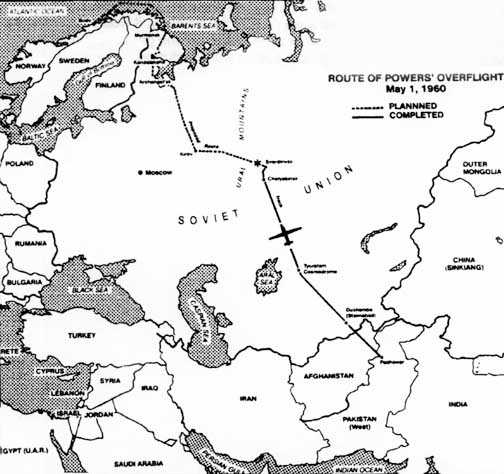|
The Impact of U.S. Aerial Reconnaissance during the Early Cold War (1947-1962): Service & Sacrifice of the Cold Warriors |
|||||
|
Page 5 of 5 Pages Seeking Answers: The Soviets did not immediately announce their success in shooting down the U-2 and capturing the pilot. Kruschev allowed the U.S. to go forth with their cover story claiming that a U-2 aircraft conducting weather reconnaissance was missing. After the cover story was in the media, Kruschev announced that the USSR had the live pilot and U-2 aircraft as proof of the U.S.’s real spy mission. Needless to say, this event marked the end of Presidentially-authorized U-2 reconnaissance overflights of the USSR. |
|||||
 |
|||||
|
Source: Larry Davis, U-2 Spyplane in Action Carrollton: Squadron/Signals Publication, Inc., 1988), 18. |
|||||
|
President Eisenhower took full responsibility for the loss of the U-2 and made U.S. history by being the first President ever to admit our nation committed espionage against another sovereign nation. Instead of apologizing for the program, though, he publicly gave his support to the need for continued aerial reconnaissance assets like the U-2. Rather than shift blame onto others in the CIA or DoD, President Eisenhower told the nation why its national security depended on the information gathered by the U-2s. Further fallout from this loss resulted in the cancellation of the Paris Summit scheduled for 17 May 1960.
By the end of the year, both of the remaining overseas U-2 detachments were closed and consolidated into a stateside unit stationed at Edwards AFB, California. Even though this marked the end of Presidentially-authorized U-2 overflights of the Soviet Union, it did not mark the end of the U-2 as an intelligence tool nor the end of a need for aerial reconnaissance as a whole. On the contrary, it would be due to aerial reconnaissance that the nation was able to be warned of the greatest danger it ever faced and track the situation through to a successful conclusion. End of Page 5 of 5 Pages, Chapter 4 — Go to Chapter 5 You may go to Page — 1 — 2 — 3 — 4 — 5 — this chapter or you may go to Cover Page — Editor’s Introduction — Overview Acknowledgments — Table of Contents Appendixes — A — B — C — D |
|||||